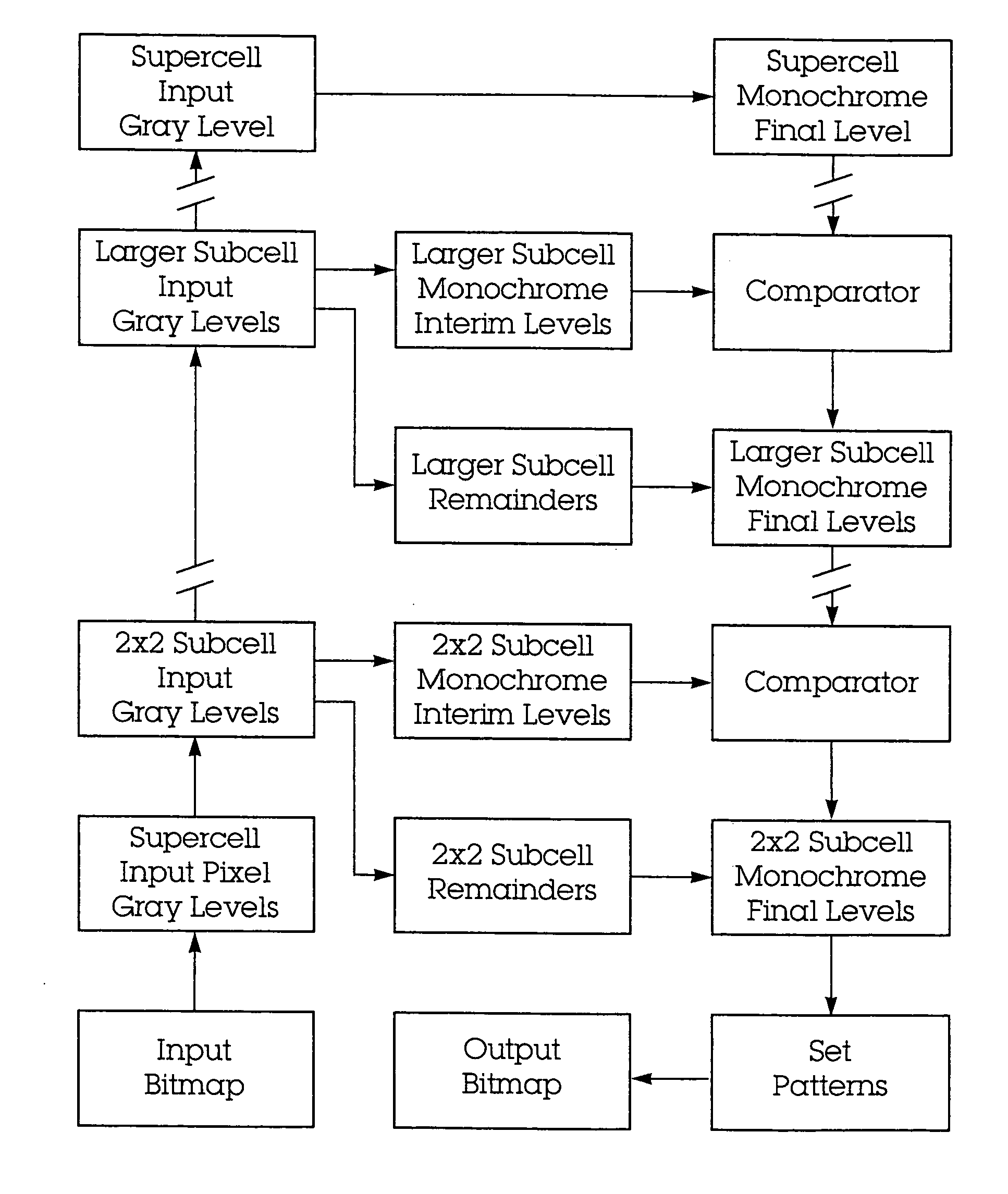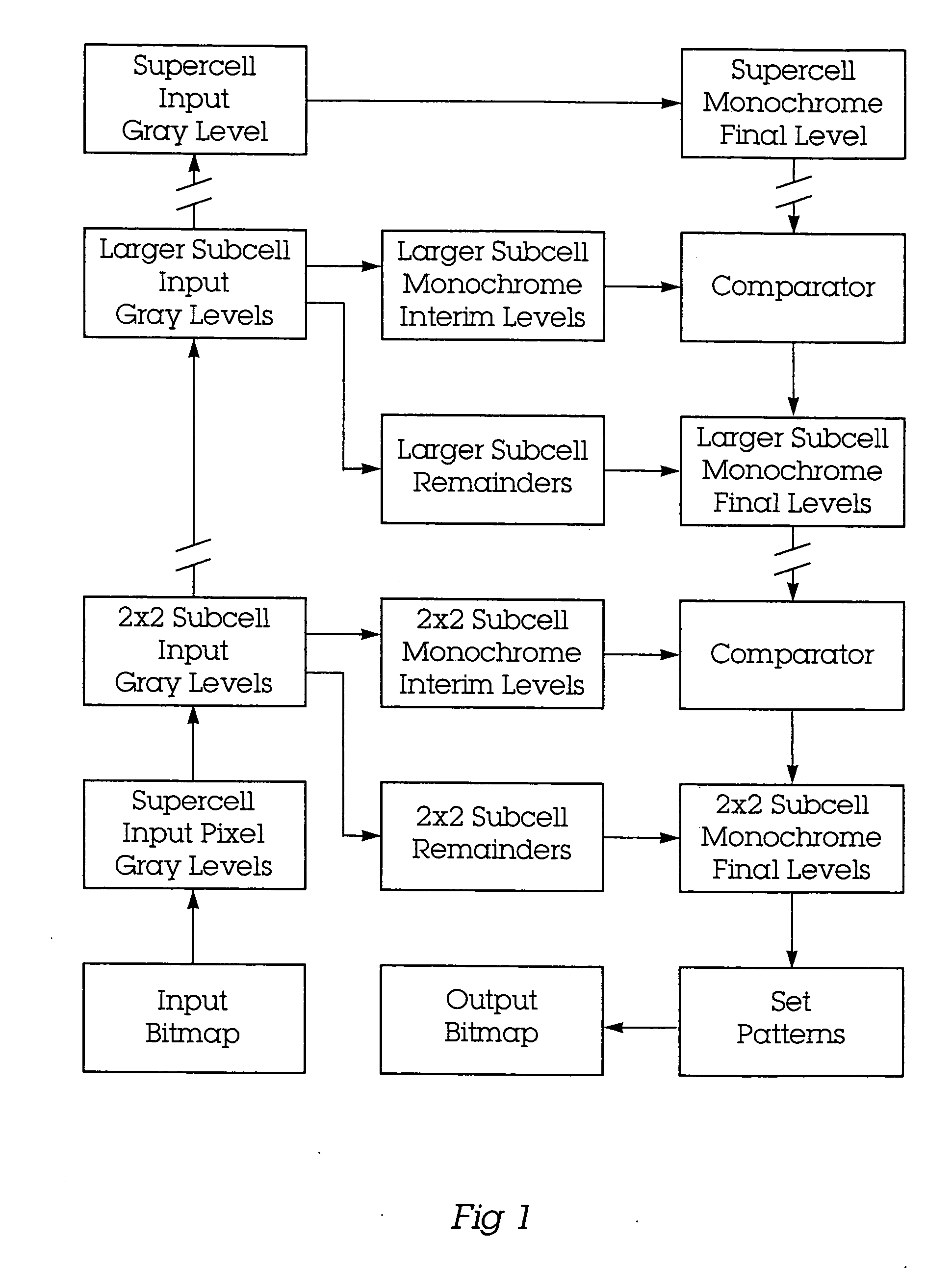Reverse diffusion digital halftone quantization
a digital halftone and quantization technology, applied in the field of digital halftones, can solve the problems of compromising the grayscale accuracy of the output image, not working well, and using all of the input image's pixels
- Summary
- Abstract
- Description
- Claims
- Application Information
AI Technical Summary
Benefits of technology
Problems solved by technology
Method used
Image
Examples
Embodiment Construction
Description—FIG. 1—Flow Chart
[0048] An Input Bitmap contains all of an input image's pixels captured at a multi-bit pixel depth. Supercell Input Pixel Gray Levels are derived by subdividing the input bitmap into a number of equal-sized supercells. 2×2 Subcell Input Gray Levels are derived by subdividing each said supercell into two-pixel-by-two-pixel subcells. From said subcells 2×2 Subcell Monochrome Interim Levels and 2×2 Subcell Remainders are derived and are stored separately for later retrieval.
[0049] Larger Subcell Input Gray Levels may be derived by grouping contained subcells into a number of equal-sized larger subcells. From said larger subcells are derived Larger Subcell Monochrome Interim Levels and Larger Subcell Remainders, which also are stored separately for later retrieval. Alternatively, this step may be applied several times or omitted, as indicated by the line interruptions. A Supercell Input Gray Level is derived when the grouping of all contained subcells is ...
PUM
 Login to View More
Login to View More Abstract
Description
Claims
Application Information
 Login to View More
Login to View More - R&D
- Intellectual Property
- Life Sciences
- Materials
- Tech Scout
- Unparalleled Data Quality
- Higher Quality Content
- 60% Fewer Hallucinations
Browse by: Latest US Patents, China's latest patents, Technical Efficacy Thesaurus, Application Domain, Technology Topic, Popular Technical Reports.
© 2025 PatSnap. All rights reserved.Legal|Privacy policy|Modern Slavery Act Transparency Statement|Sitemap|About US| Contact US: help@patsnap.com



